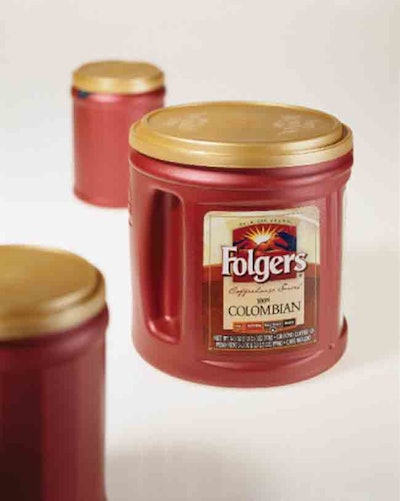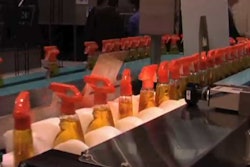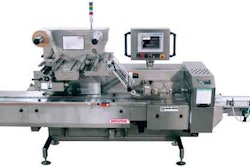In a recent survey of nearly 250 Shelf Impact! readers ranging from brand and product managers to designers to packaging materials suppliers, two-thirds of the respondents say that a year or less is sufficient time to get a truly innovative package from concept to finished product on the store shelf.
Some would say this is little more than wishful thinking. “It's very naïve for people to think you're going to do something truly groundbreaking in six to 12 months,” says Peter Clarke, president of Product Ventures (www.productventures.com), a structural design firm that has worked on innovative packages over the past 20 years for the likes of Kraft, Procter & Gamble, and Heinz. Clarke acknowledges that innovative packaging needs to get to shelf as quickly as possible. But he says designs that meaningfully marry package and product require more time—sometimes significantly more—than many product manufacturers are giving them. Instead, package development bows to economic pressure to get some products to market too quickly—and they fail.
“The amount of time required for an innovative package depends on how you define innovation,” Clarke explains. “A shape change or a functional difference in how the package works requires 18 months. If the package needs new equipment and new components, you're looking at three-plus years.”
However, additional factors—such as the product itself, marketing strategy complexity, and the corporate culture in which the package development team operates—can affect the timeline. For a company such as Nike, brands fit lifestyles and are marketed through storytelling. Package creation is more measured. “Quick-strike products and packaging take nine months to develop while sophisticated product introductions require up to four years, says Heather Amuny-Dey, Nike design director North America.
“At Nike, marketing is very respectful of the value of design,” Dey told the Proof: Market Research & Development for Package Design conference in September.
Conversely, Del Monte markets commodity products such as canned fruits and vegetables. “Innovation” at Del Monte often means less-complex strategies such as product line extensions that may require relatively simple label-design alterations, notes Bonnie McFarland, director of graphic design and packaging. Packages that Del Monte defines as innovative typically require six to 12 months for completion, she says.
Clarke mentions two other factors that are often unconsidered when building a timeline for innovation-packaging testing and whether a “hard” packaging changeover will be necessary. “By ‘hard' changeover, I mean the retailer may want enough inventory on hand to completely replace an old package, rather than phasing out the old packages. For a mass merchandiser, it takes months to produce enough inventory for the initial start-up.”
Clarke emphasizes that innovation should be approached as a process rather than as a step in package development. Kevin Leibel, president of Innovation Management (www.innovationmanagement.com), a consultancy whose clients include Coca-Cola and Kodak, concurs.
“It's not a bolt of lightning where you say, ‘Here's a great idea,'” Leibel says. “You need to look at macro trends and understand how packaging complements what's inside the package. Many companies go through this exercise with their product development, but not with package development.”
Product manufacturers that treat innovation as a process and devote sufficient time to package development can create a lasting embodiment of their brand's identity. Following are three packages that succeed in achieving this objective.
Folgers Coffeehouse Series. When extending a product line to court a new audience, color is usually leveraged first as a design tactic. When the objective is distinguishing the new premium line from a brand's established “workhorse” line, a special color mix may be appropriate—yet it can also bring unforeseen challenges.
P&G had worked extensively with Product Ventures several years ago to create the groundbreaking high-density polyethylene AromaSeal red and green handled canisters for its Folgers “everyday” coffees. But recently, P&G marketers wanted the right visual effect to extend the line into premium coffees under the Coffeehouse Series sub-brand. In the process, P&G took the container design to new innovative heights by using the same canister structure while changing how color was used in the canister wall. The color of choice was a deep red/burgundy with a soft pearlescent effect for the canister and a gold lid. These colors differentiate the Coffeehouse Series line from everyday Folgers coffees' red or green canisters with black lids.
Achieving the desired look for the Coffeehouse Series, however, presented a formidable challenge. Design firm LPK, Clariant Masterbatches' (www.clariant.masterbatches.com) ColorWorks center, and Liquid Container Corp. (www.liquidcontainer.com) solved it collectively by concentrating on color physics rather than color chemistry, drawing inspiration from personal-care packaging.
“This was an excellent example of collaboration,” says Gerard Buisson, principal packaging engineer for Folgers on the Coffeehouse Series canisters. “LPK was very clear on what they wanted in the target colors. Clariant was able to arrange some very quick trials, work with Liquid Container on how the different layers came together, and then develop the proper formulations.”
Initial canister samples for the Coffeehouse Series line lacked the desired luster and reflectivity, says Andrew Tesnar, LPK senior design director. However, LPK recalled the successful redesign of P&G's Olay Quench line of personal care packaging and contacted Clariant's ColorWorks center, where the visually striking Olay bottles had been developed.
Meanwhile, Clariant, operating within prescribed shades between red and brown, found the right equipment at Liquid Container to achieve the visual effects that Folgers desired for the canister. Liquid Container molds the Coffeehouse Series canisters.
“I learned that they were running multilayer blowmolding machines with separate extruders feeding one multilayer die,” explains Len Kulka, Clariant ColorWorks director of creative development and packaging. “This meant that we could try techniques that we've used very successfully on cosmetics and personal-care packaging—like Quench—to develop containers with incredible depth and reflectivity.”
The package development team also determined why achieving the right look in the new canisters had been difficult. The red and green AromaSeal canisters are multilayer, blow-molded structures with production trim scrap sandwiched between outer and inner layers of virgin material. Both virgin layers are HDPE and have the same color formulation. Unsuccessful early attempts to create the new color for the Coffeehouse Series had followed the same multilayer construction approach.
But Kulka determined that so much color was being applied to the virgin layers for the premium Folgers containers, in order to build opacity, that the color volume compromised the gloss and reflectivity of the pearlescent additives. The turning point came with the development of a multilayer color system from the ground up, rather than as a monocolor system.
In a multilayer color system, the color function of each layer in the canister is based on the desired visual characteristics. Color in one layer of the Coffeehouse Series canisters addresses the need for reflectivity, brightness, and light transmission. Color in another layer provides mass tone color with high opacity. Trim scrap in the middle layer combines the functionality of the outer and inner layers.
“All three layers are necessary to produce the visual effect we see on the store shelves,” Kulka adds. “Eliminate any one of the layers, and the canister has a totally different appearance.”
P&G says the Coffeehouse Series has been very well received. The results delivered another bonus on P&G's bottom line. The use of a multilayer color system to minimize the need for higher-cost pearslescent materials reduced the total cost per canister.
Heinz Fridge Door Fit. Perhaps the best way to determine which innovations are right for your package is to observe how consumers use the package. Then, think about how the package can provide tangible benefits.
Taking this approach, H.J. Heinz created a more hand- and space-friendly bottle, called Fridge Door Fit. While smaller than its predecessor, the new bottle holds more ketchup. In the process, Heinz has increased ketchup consumption 68% in the past year on the products it has upgraded to the new bottle, says Wendy Beitsinger Joyce, senior brand manager for Heinz ketchup.
Some consumers consider ketchup to be a food group, and they told Heinz researchers that they often didn't have enough ketchup in their homes. The dimensions of the former 64-oz ketchup bottle, 111⁄8”x47⁄8”x33⁄4”, made extra “stock-up” bottles a space-guzzler in the pantry. The old bottle's proportions also limited it to one of the already-crowded main shelves in the refrigerator.
Consumers told Heinz during in-home studies that they wanted a more versatile large-size ketchup bottle that would be easy to store and use frequently. Heinz's cross-functional team, working with Product Ventures, designed The Fridge Door Fit bottle to be stored upright or upside down. Consumers gave Heinz feedback on the bottle design as it went through development.
The 64-oz PET bottle, from Graham Packaging (www.grahampackaging.com), is more slender at 10”x5”x35⁄8” than its predecessor. These more consumer-desirable dimensions, plus a wide, flat-top cap, give the bottle the storage flexibility that consumers want.
A one-piece polypropylene closure from Seaquist (www.seaquistclosures.com) features a “lock-back cap” with a value that's engineered to expel the last remaining drops of ketchup without the need to shake the bottle. The bottle's no-slip grip answers consumer frustrations about awkward handling of large ketchup bottles.
“The research and development of the Heinz Fridge Door Fit bottle was truly a holistic cross-functional effort involving many functions within Heinz, from the very initial state of consumer research through design of the concepts and eventually development of the product design,” Joyce says.
By observing how consumers use existing Heinz ketchup bottles in their homes, the package-development team identified “compensating behaviors”—additional actions consumers had to take in order to get the bottle to work the way they wanted it to. These behaviors in turn provided opportunities for better design.
“These behaviors may not have been articulated in a traditional focus group,” Joyce explains. “As a result, the insights we identified were richer, and the concepts we developed better fit what consumers wanted to see from Heinz.”
Amenity men's personal care line. The reintroduced line of Amenity men's personal grooming products offers another example of how understanding how consumers use a product can provide clues to effective design. This is best accomplished, says Innovation Management's Leibel, by “getting into their space. Start from their point of view and work backward.”
Amenity LLC followed that guideline in creating what the company believes is a superior skin care line in technologically advanced packaging that works for men. First, the company established a psychographic profile of the target audience by asking men about their likes and dislikes as they used both the products and the packaging in their grooming ritual. Next, Amenity product developers consulted dermatologists, plastic surgeons, and biochemists in creating a formula, called Pro-Form 6, to solve men's facial care challenges such as acne and dry skin.
Turning to the packaging, Amenity learned that men found the brand's previous glass apothecary packaging to be dysfunctional with their travel and showering needs. Amenity focused the new design around five requirements that men identified in the research. The packaging needed to work quickly, minimize product waste, extend product shelf life, hold up well during travel, and look masculine.
For its gel facial cleanser and after shave and face moisturizer, Amenity selected dispensing units from Kaufman Container (www.kccbottle.com). Men gave the metered-dose dispensers the thumbs-up because they could receive the precise product dosage they wanted by pressing once on the pump. In addition, the airless dispenser extends product shelf life and eliminates product contamination.
Package testing was an important step in the innovation process. The closure never came off during testing, providing a comfort level about the potential for product spilling during travel.
The large dispensing heads contour well against a man's finger and the black-theme packaging looks masculine across the product line.
These three packages from P&G, Heinz, and Amenity underscore packaging's potential to lift the value of a product. They're evidence that packaging can enhance product value by going beyond basic functional capabilities as a containment vessel and an iconic display item. In order to succeed, say those who are pushing the boundaries of innovation, package development teams must focus on innovation as a process in order to lift design to a higher level. Just as important, sufficient time must be allowed to assure that the package works well for everyone who comes in contact with it.
A realistic timeline for bringing structure to innovation
Any package development team intent on groundbreaking design should allow at least 18 months to properly develop an innovative package, test it, and get ample product volume into distribution.
So says Peter Clarke, president of Product Ventures, an industrial design firm that works on as many as 15 innovative packaging concepts at any given time. Throughout his many years of experience, Clarke has found that structural changes may require up to 18 months from concept to market. A more significant packaging transformation may take three to five years, depending as well on the extent of changes required for filling and assembly equipment.
Clarke provides the following general packaging innovation timeline, which could total as long as 21 months in some scenarios:
“It is important to keep these necessary steps in mind, although when possible try to speed the path to commercialization,”
Clarke advises. “Be ambitious, but be smart.”
For example, the Heinz Fridge Door Fit ketchup bottle, designed and developed by Product Ventures, required 18 months to proceed from concept to distribution.



























